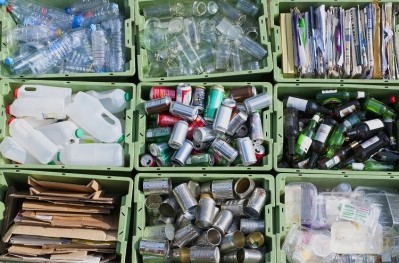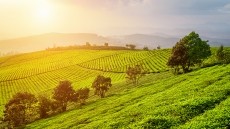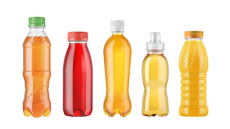Growing appetite for edible packaging? The innovations hungry to replace single use plastic

Just a fraction of all plastic packaging used globally is recycled. According to the Ellen MacArthur Foundation, the statistic sits at around 14%, which is not insignificant when an estimated 460m tonnes of plastic is produced annually.
Plastic pollution can be blamed on a multitude of factors, ranging from difficult-to-recycle materials, a lack of recycling infrastructure, and consumers’ irresponsible disposal of used packaging. But what if packaging didn’t need to be collected, recycled, or disposed of at all. What if packaging could simply be consumed?
Edible packaging does what it says on the tin. Often made from renewable or biodegradable materials, innovations in this growing category are designed to eliminate the need for end-of-life disposal at all. So which edible packaging innovations, fit for human consumption, are turning heads?
The edible packaging market is poised to take a larger bite out of single-use plastic sales in the coming years, with consulting firm Towards Packaging projecting the $1.4bn market size in 2022 to reach $5.26bn by 2032.
Stroodles: Edible tableware made from pasta
In the UK, packaging innovator Stroodles is rethinking tableware with wheat and wafers. It is estimated that 8.3bn plastic straws end up in our oceans ever year, so Stroodles set about developing a zero-waste product made from just two ingredients: wheat and water. The pasta formula is edible, lasts for more than an hour, and has no flavour.
Since then, Stroodles has expanded into other packaging offerings, including edible plates and bowls made from wheat bran, an edible cup made from water, and edible spoons made from biscuits.
The cup and spoons have slightly more complex ingredients lists than the basic straws and plates, but not by much. The cup is made from water, oat bran, wheat flour and sugars. The cocoa-flavoured edible spoon is made from wheat flour, sugar, cocoa powder, millet flour, oat flour, rice flour, barley flour, and chickpea flours.
Recently, Stroodles teamed up with Swedish fintech Treyd to offer food and beverage makers a ‘sell first, pay suppliers later’ model. The packaging innovator hopes the tie-up will help fuel its continued growth.
“Treyd has given Stroodles more business flexibility and peace of mind, enabling us to scale quicker and further as we can now hold more stock – rather than having to order just in time and be at the mercy of logistics,” added Maxim Gelmann, Stroodles CEO and founder.
“In turn, we can react to urgent demand, fulfil more orders, grow income, and subsequently attract more repeat orders, while proactively dealing with the cash flow gap between stock payment and sell out.”
Bio2Coat: Replacing single-use plastic in grocery
In Spain, Bio2Coat is developing natural, edible coatings for fruits and vegetables to replace single-use plastic.
Based in Barcelona, the start-up claims its innovation keeps produce fresh, tasty and healthy for longer. It does this by covering fruit and vegetables in an invisible coating that protects against microorganisms that could spoil fresh produce.
Without going into detail, the start-up told FoodNavigator last year its formula contains just three to four ingredients, with no chemicals or additives. The edible coating also improves the produce’s visual appearance, we were told. Tests suggest its technology can provide up to 15 days extra shelf life.
“We hope to solve two problems: food waste and plastic waste coming from packaging materials,” said Bio2Coat co-founder Farayde Matta Fakhouri. “Nowadays, one third of all food produced in the planet is wasted while only 25% of this amount could feed 800m people.
“In regards to plastic, the production increased 270 times in the past 70 years and 91% of this plastic produced globally is not recycled and ends up in landfills, or as pollutants in water streams and in the ocean.
“Those problems are super relevant and urgent, and it will not be solved only by one solution. But we hope to at least make a significant difference.”
Notpla: Edible packaging from algae
Notpla is not new to the packaging scene, having first launched as Skipping Rock Labs almost ten years ago. But many will still know the start-up from its first invention Ooho, a prototype of which was developed back in 2014.
Ooho is an edible bubble designed to replace single use packaging. These algae-based membranes are capable of encapsulating water and other kinds of liquids. The ‘bubble’ can biodegrade in four to six weeks, or else be consumed. Notpla trialled its innovations at sports events such as the London Marathon in 2019. On these
occasions, the company was able to replace a significant amount of plastic.
The company is now working with Decathlon to replace its conventional aluminium and plastic packaging for energy gels, co-founder and co-CEO Pierre Paslier recently told FoodNavigator.
Notpla is also working with packaging that hasn’t been designed for consumption, but is still made from seaweed and plants. These include takeaway food containers, rigid cutler, spice sachets, and food oil pipettes, as well as applications for cosmetic and household cleaning products markets.
Recently, Notpla won the EarthShot Prize for its seaweed-based takeaway container lining product. Once used, the entire packaging can be composted.
Apeel: Protecting fruits for extended shelf life
Apeel Sciences is another start-up working with fresh produce. The US-based company has developed technology that keeps moisture inside fruit and vegetables and oxygen out. This slows the rate that produce spoils.
The protective layer has been likened to an ‘invisible skin’. It is made from plant-derived materials that exist in the peels, seeds, and pulp of fruit and vegetables. Importantly, the ‘invisible skin’ is safe to eat.
When Apeel Science’s technology is applied to mandarins, the company claims it can extend the fruit’s shelf life by an average of seven days compared to conventional waxed mandarins.
Apeel-protected avocadoes present with extended quality and firmness by an average of 2.8 days, and 36% better ‘good external quality’ as well as 23% more ‘good internal quality’ 16 days after ripening.
Apeel’s technology is approved in 65 countries across six continents. With the exception of the EU (and countries that follow EU food standards), Apeel is approved for application for all fruits and vegetables without restriction.
In the EU, it can be used on citrus, avocado, pineapples, papaya, banana, mango, pomegranate, and melons.
Xampla: Edible packaging for stock cubes
Cambridge University spin-out Xampla structures plant proteins and other feedstocks into plastic-free packaging for the food and beverage industry. Although not all its innovations are designed to be edible, its flexible films for stock cubes, are.

Back in 2021, recipe box kit Gousto trialled Xampla’s edible packaging solution. The packaging was made by engineering and drying a pea protein material into sheets. Home cooks who took part in the trial simply dissolved the stock cube and its Xampla edible packaging into hot water.
“Our trial with Gousto was a huge success with customers…The stock cube wrapper was easy to use and did not affect the taste or texture of the final dish,” Stanley Mitchell, head of business development at Xampla, told FoodNavigator last year.
One potential downside was that the stock cube wrapper had a shorter shelf life compared with a conventional wrapper. But since Gousto’s products are intended for consumption within a short timeframe, Mitchell was not concerned.
The start-up has also supplied its innovations to other companies in the food and beverage sphere. Xampla developed plant-based microcapsules which global beverage maker Britvic has used to encapsulate vitamin D in fortified drinks and protect degradation of vitamins during storage and transformation.
“Using plant protein microcapsule technology, we can wrap a microscopic droplet of vitamin oil in pea protein so that the droplets are protected within the liquid itself,” explained Mitchell.
“Our cutting-edge technology enables vitamins to be delivered to the intestine where it is absorbed into the body in the most effective way.”



























